Charger Xtar MC4S

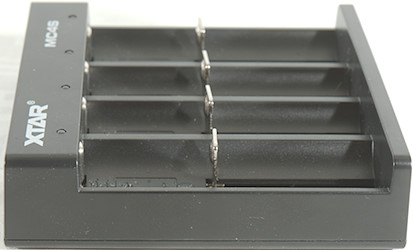

This is one of Xtars simple chargers, it can charge LiIon and NiMH. It uses a USB-C socket for power input and only needs 5V.




The charger is delivered in a white cardboard box with specifications on it.
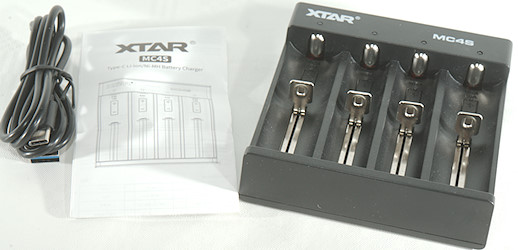
The box contained the charger, a USB-C to USB-A cable and a instruction sheet.

The USB-C input that only requires 5V and cannot turn a USB-C charger on.

There is not much user interface, only a couple of leds. They are red while charging, green at all other times.
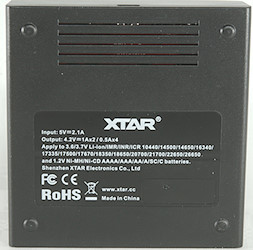
The specifications are on the back of the charger, in clear white print.

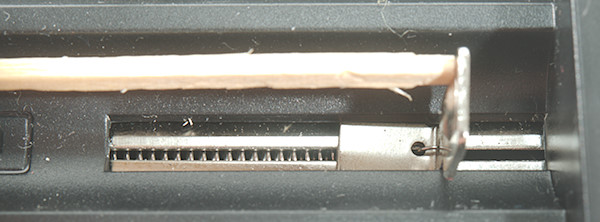
The charger can handle both button top and flat top batteries.
The slider moves smoothly and can hand cells from 32mm to 72.5mm long.
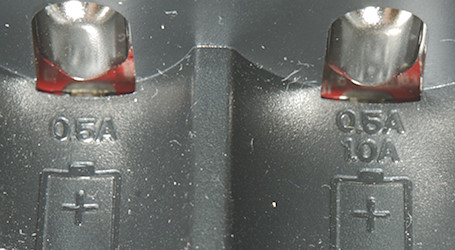
The charger is marked with charge current, but it is not correct.


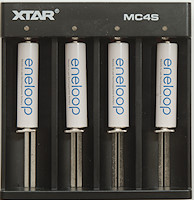
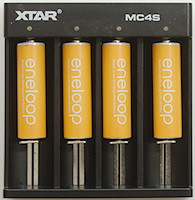
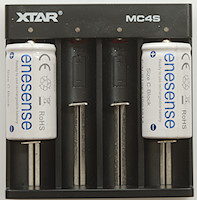

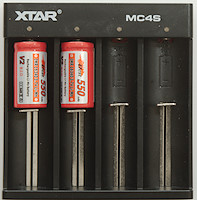
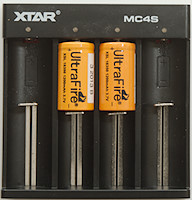
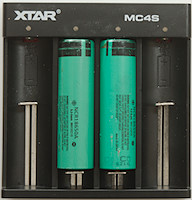
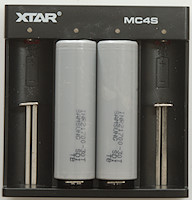

The charge current is on the high side for small batteries.
Measurements charger
- Power consumption when idle without batteries is 30mA from 5V
- From 0V to 2.8V the charger will charge with 100mA, above with full current.
- Below 2V it will assume NiMH batteries
- Above 2V it will assume LiIon batteries
- When charge is finished the charger will charge with 0.7mA.
- Charger will not restart if voltage drops.
- Charge will restart charging after power loss, or battery insertion.
- When not connected to power it will drain up to 8mA from a battery.
LiIon
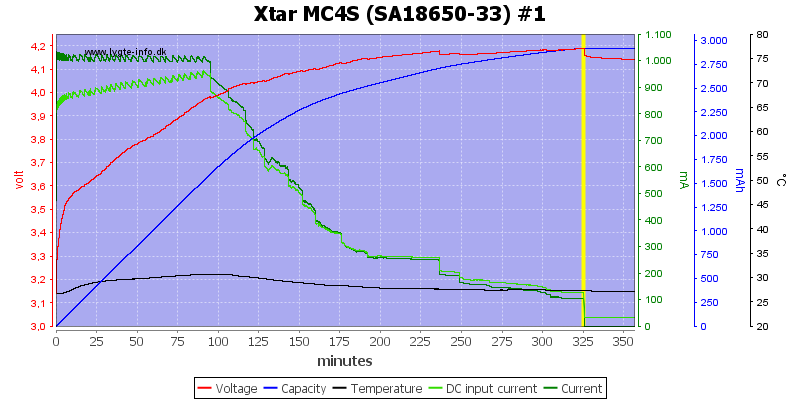
This is a CC/CV charge, termination current is around 100mA
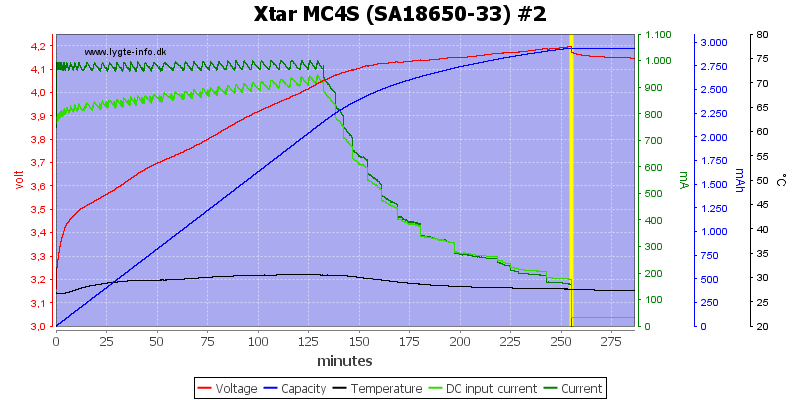
Slot #2 looks similar, but termination current is higher. This is a bit strange because it was supposed to charge with 0.5A, but it also uses 1A.
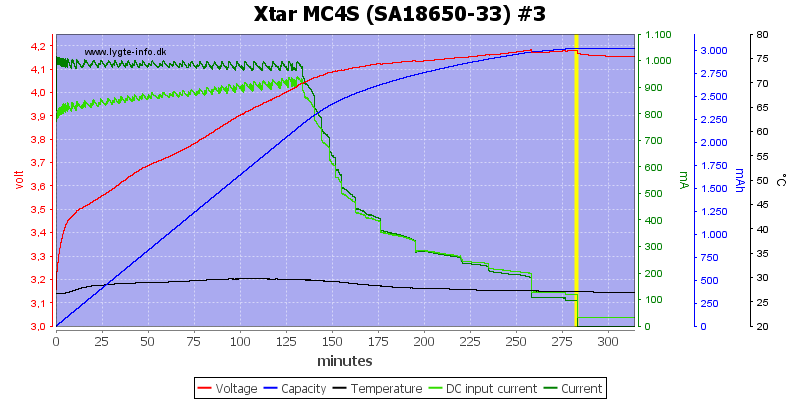
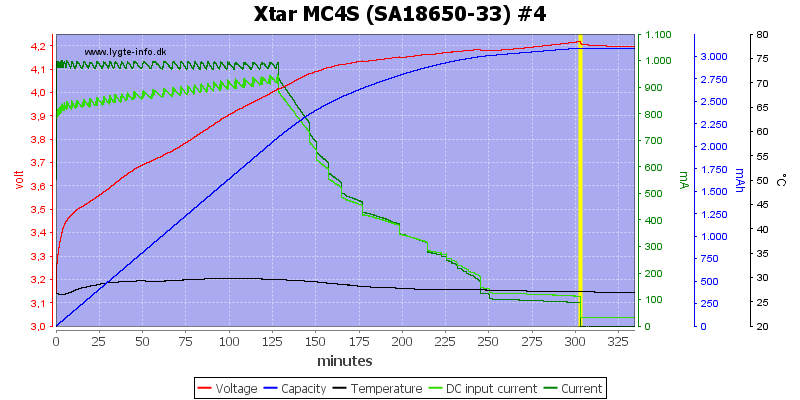
The last two slots are similar with 1A charge current.
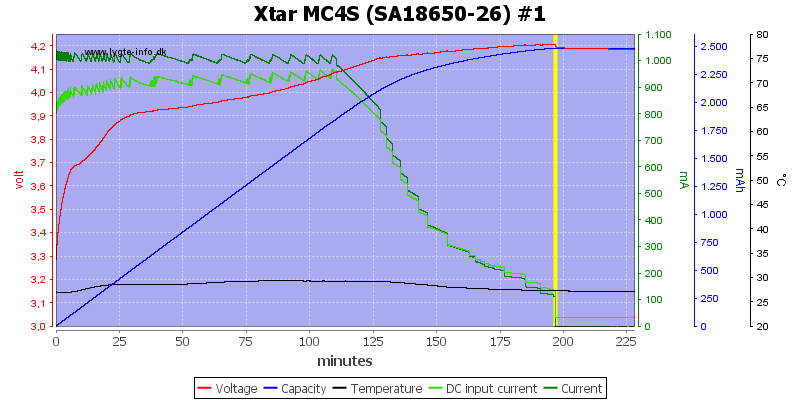
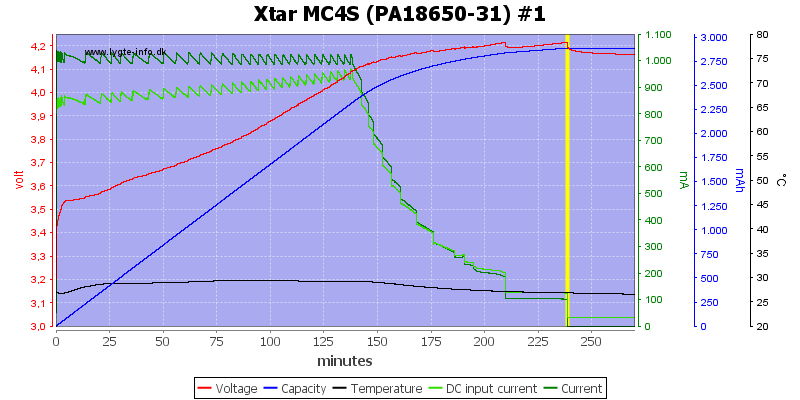
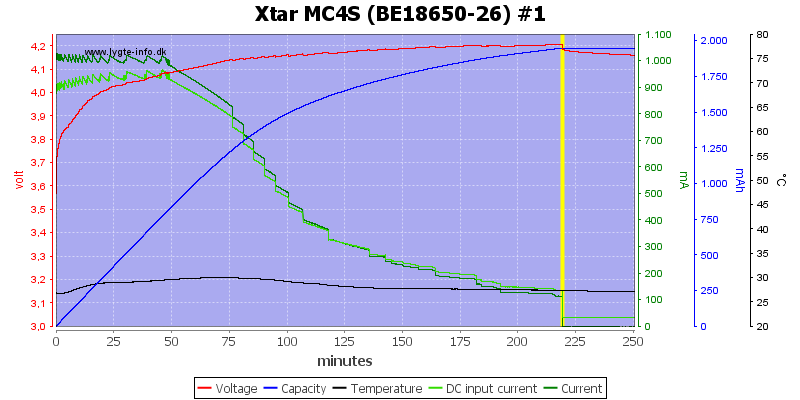
There is no surprise with the other batteries.
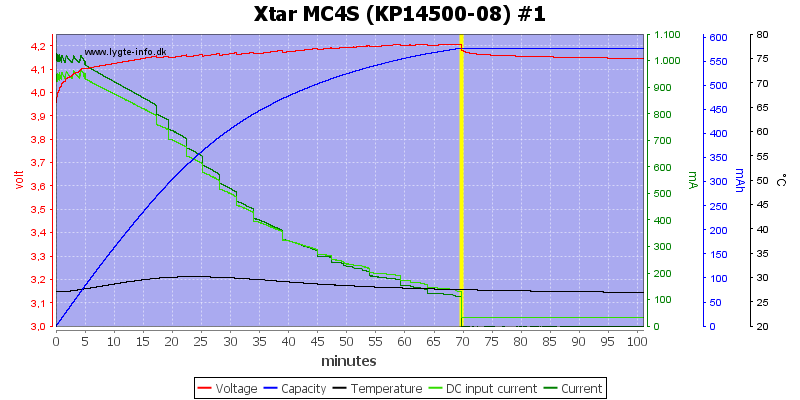
I did the smaller cell in slot #1, to see if the 0.5A current kicked it, but not is also uses 1A on small cells.
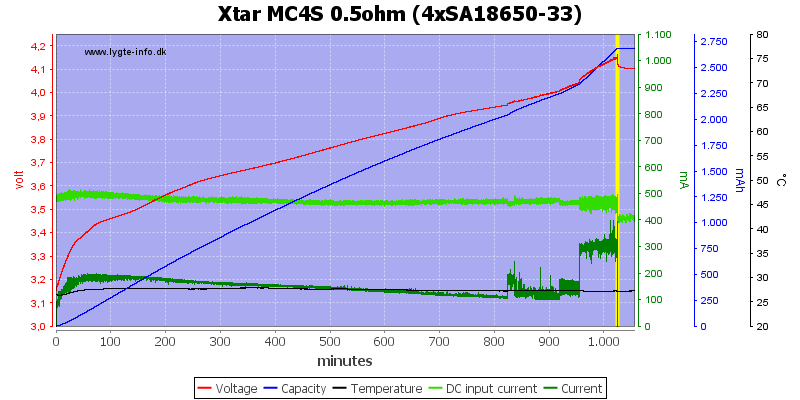
Simulating a weak charger or long cable reduced the current significantly, but the charger terminated slightly early.
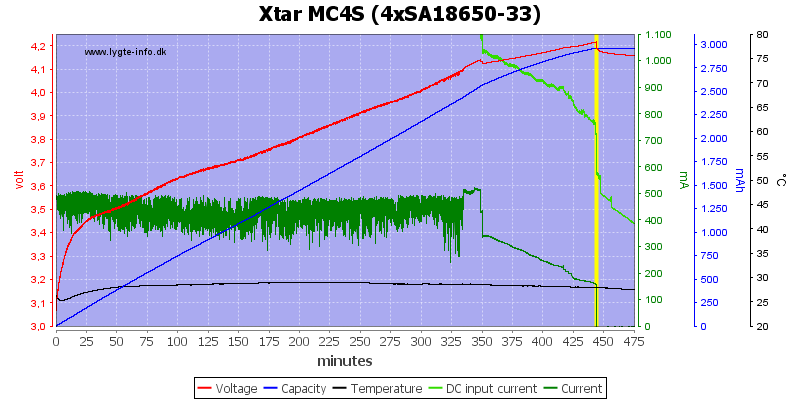
With four batteries the charger did reduce charge current to 0.5A.
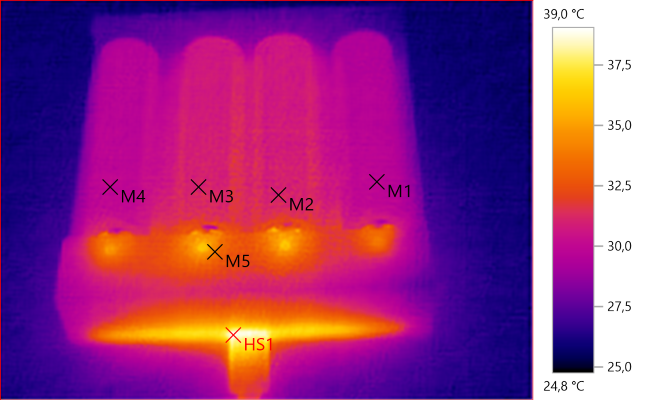
M1: 30.1°C, M2: 31.3°C, M3: 31.1°C, M4: 29.9°C, M5: 33.8°C, HS1: 39.0°C
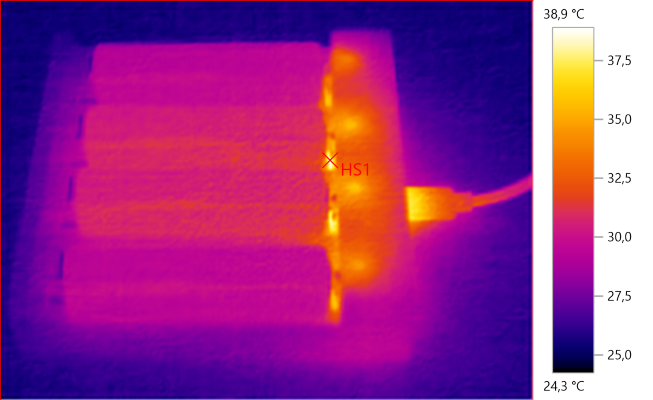
HS1: 38.9°C
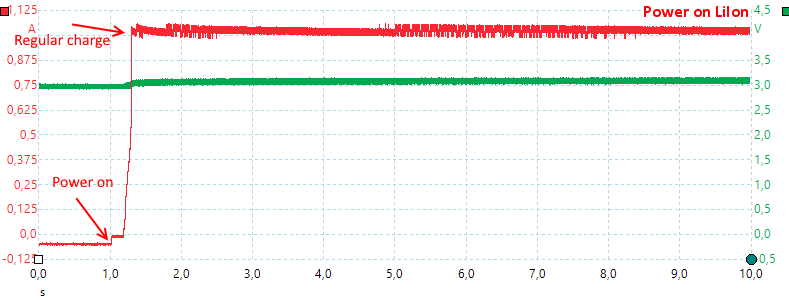
The charger is very fast to start.
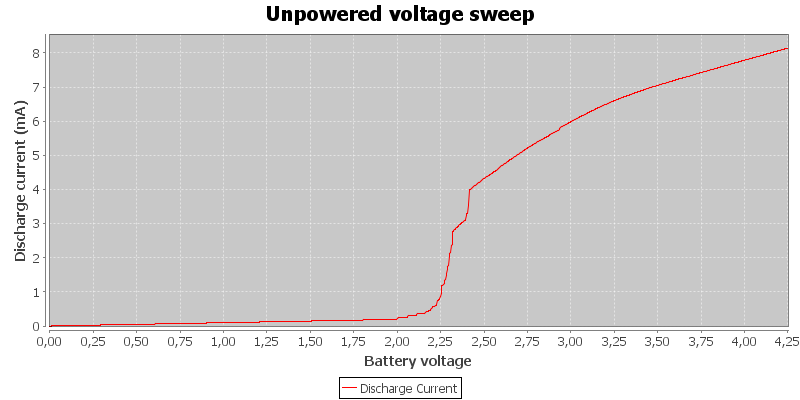
How much current the charger discharges batteries with when not powered. It is best to remove the batteries when the charger is done.
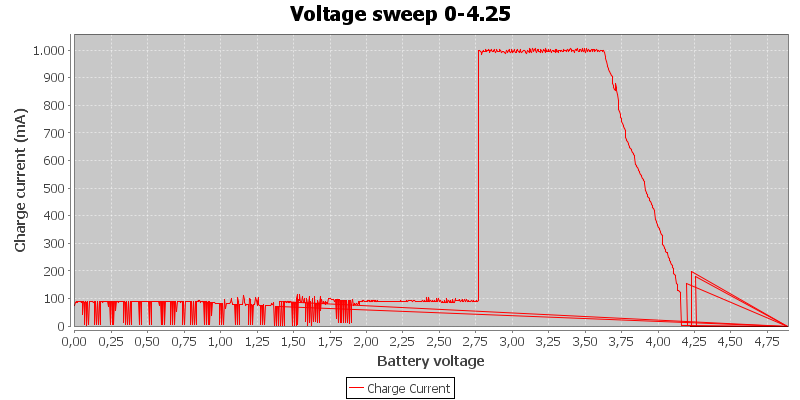
The charge profile for slot #2 (Marked 0.5A). It uses 1A. The NiMH only shows at 0.1A, because I do not wait 5 minutes at each step.
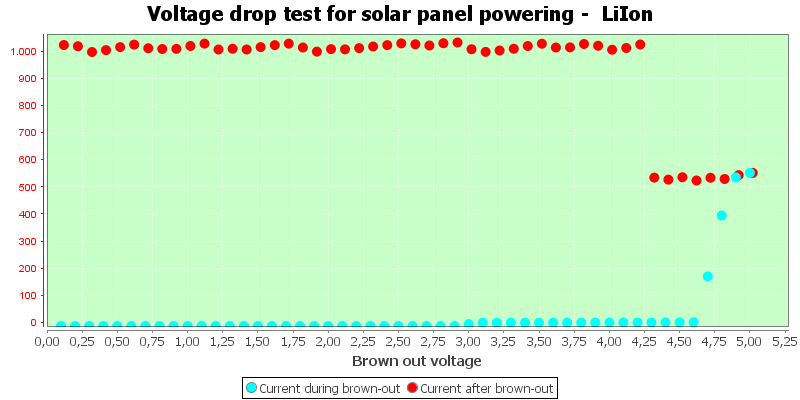
The charger handles the voltage dips nicely, but because it fails on NiMH i will not trust it on a small solar panel.
NiMH
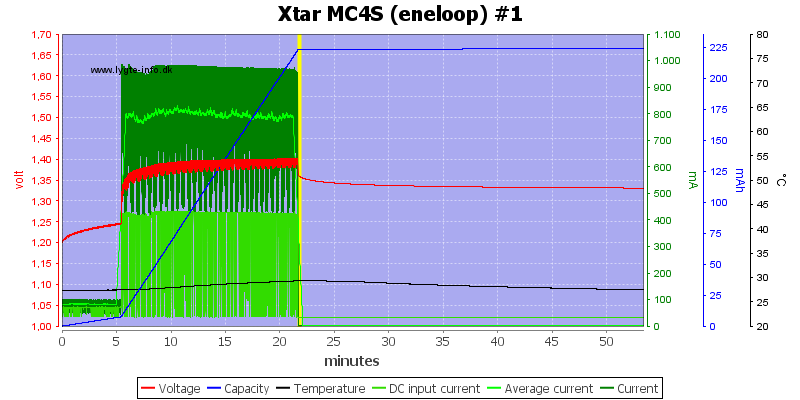
This is a very fast charge, it only takes 20minutes with the first 5 minutes used at low current, but then the battery is only charged to about 10% of capacity.
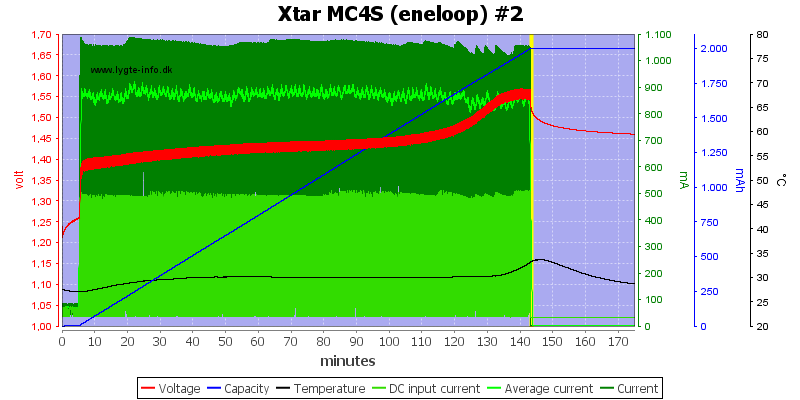
This is better, the charge current is nearly 1A and it charges the battery fully.
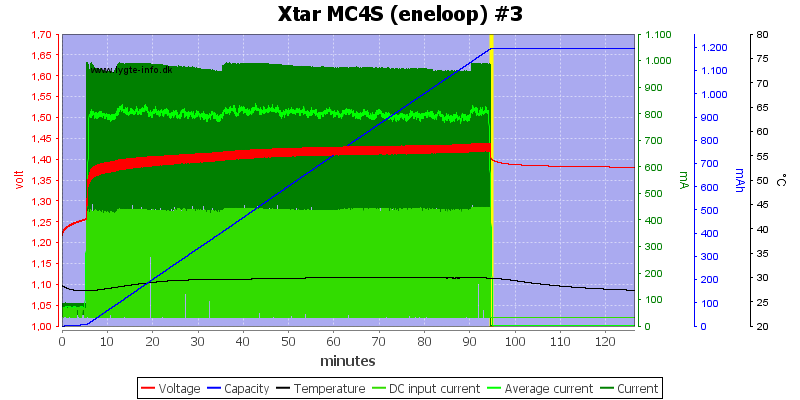
Again a partially charged battery.
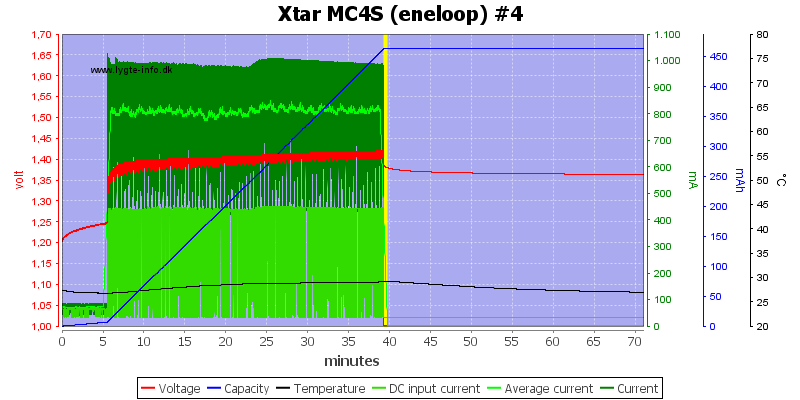
And another partially charged battery.
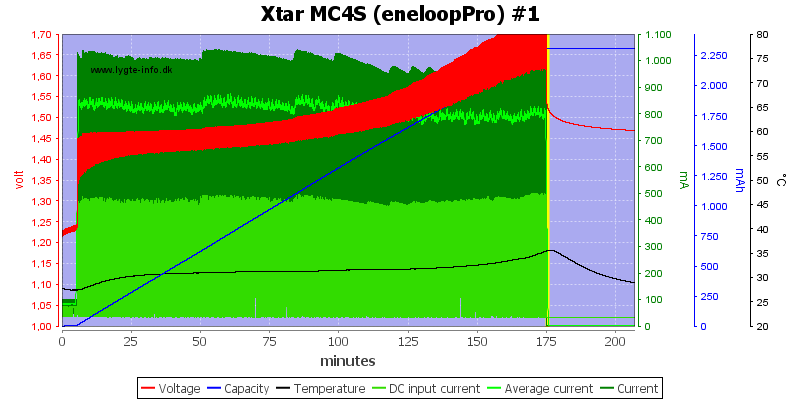
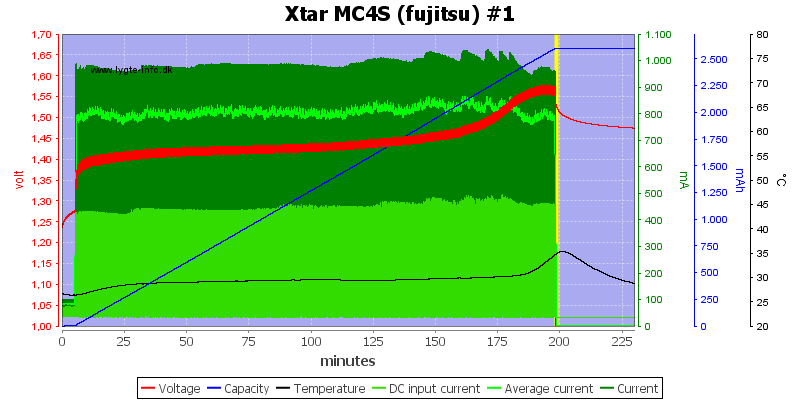
These two high capacity batteries gets a full charge.
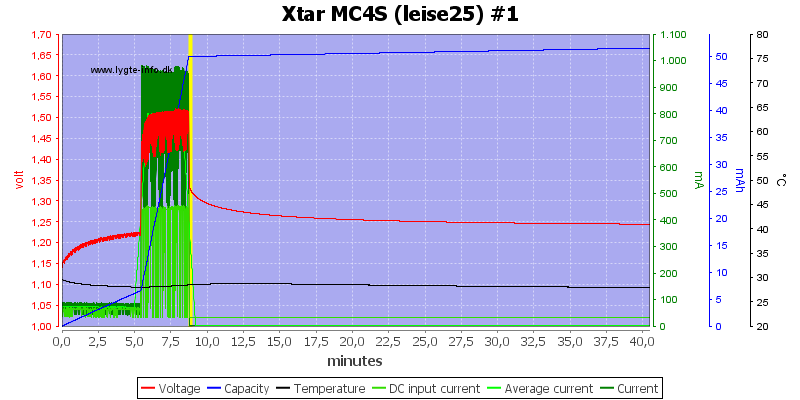
But the leise fails completely to charge.
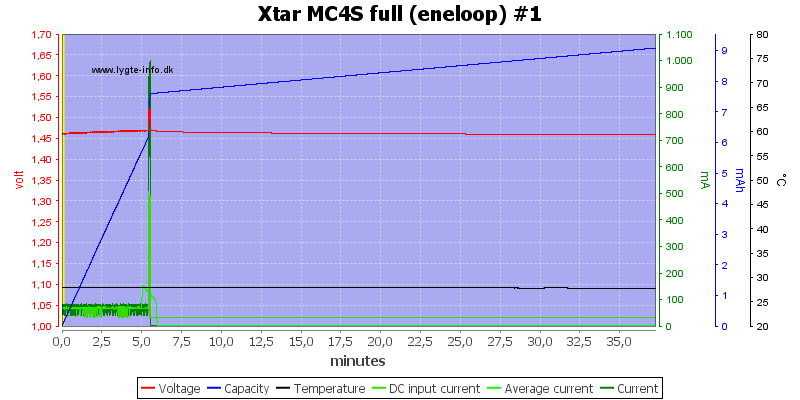
The full cell was stopped very fast.
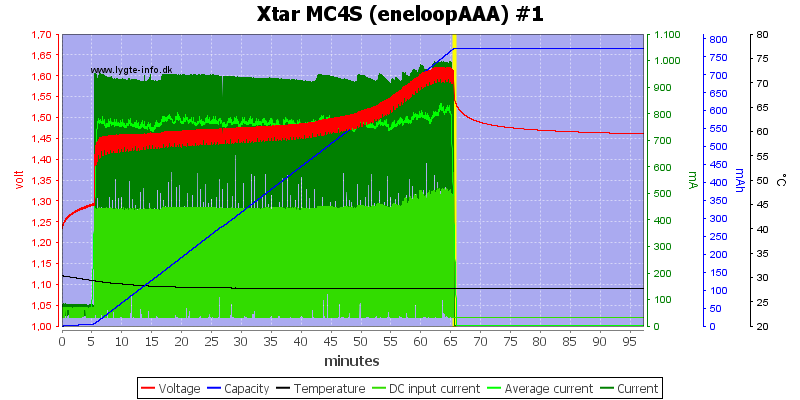
The AAA cell is charged nicely.

Charging four cells did also fail, the one I measured on terminated very early.
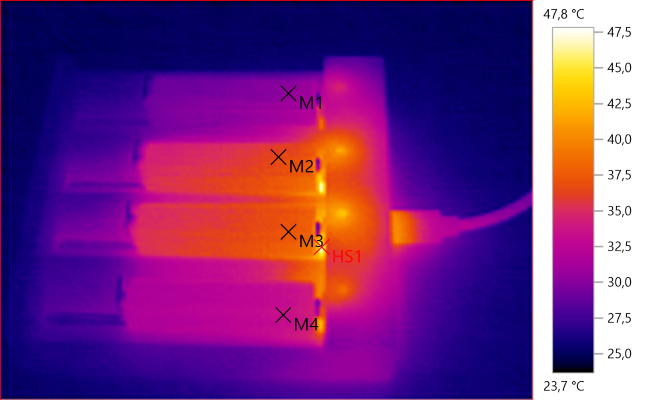
M1: 30.4°C, M2: 36.2°C, M3: 37.3°C, M4: 33.4°C, HS1: 47.8°C

With NiMH the charger starts with a low current charge, this is probably to detect LiIon batteries.
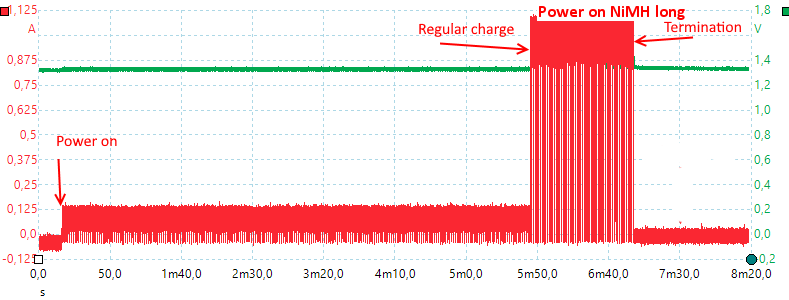
After about 5 minutes it switches to full charge current and it terminates shortly after.
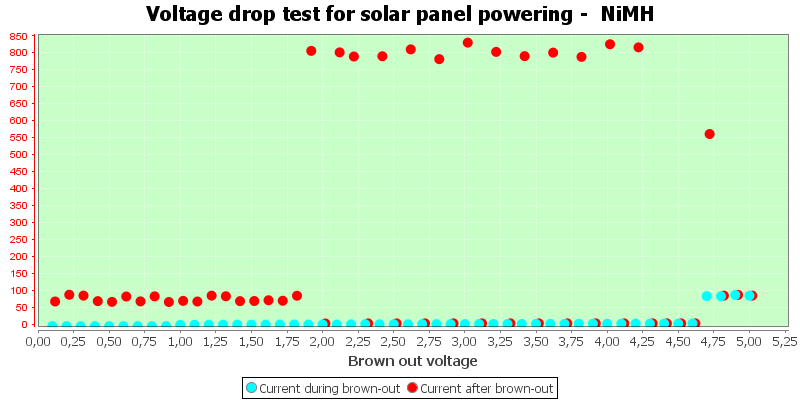
It is not as good with unstable voltage and NiMH as it is with LiIon, but it is not as bad as the chart shows. The problem is the pulsing of charge current (The raw data shows it do fail).
Conclusion
Xtar has completely failed with this charger. The charge currents are wrongly marked and it cannot charge NiMH reliable. It uses a USB-C connector, but do not work with a USB-C supply.
With that said it will charge LiIon nicely.
Notes
The charger was supplied by XTAR for a review.
Here is an explanation on how I did the above charge curves: How do I test a charger






















































